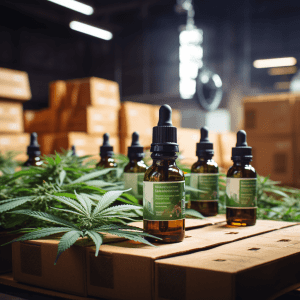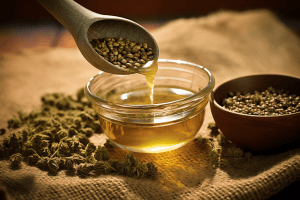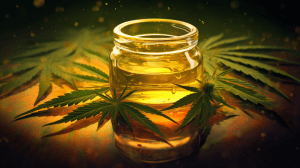Because of its incredible therapeutic benefits, more people than ever are looking to understand how to buy the best CBD oil in Australia.
Its popularity as a natural health product was inevitable.
CBD is hugely helpful for overall well-being. It promotes mental and physical health by activating the body’s endocannabinoid system, enabling it to reduce anxiety, boost focus, improve sleep, lower inflammation and combat pain.
But finding where to Australia’s best CBD oil isn’t as straightforward as it sounds.
While CBD is legal in Australia after the government updated laws to make it purchasable without a prescription in 2021, there are still a few challenges.

Certain restrictions and rules exist for these products. Some require a prescription, depending on their dosage strength and type. You also can’t buy CBD oil everywhere.
Shopping for it in Australia can only be done at pharmacies, cannabis dispensaries or online CBD shops. In each case, there are some drawbacks and risks to be aware of. This guide will help you safely buy CBD in Australia to avoid legal risks. We’ll also get you across where you can purchase CBD oil to help you save time and effort.
Contents
How to Buy CBD in Australia

If you’re wondering how to buy the best CBD oil in Australia, there are a few ways.
But depending on what kind of product you’re seeking, the choice of method will differ.
To explain, there are several rules around the purchase of different CBD product types, strengths, THC content and formulations.
Many products are only available by prescription and can’t be purchased over the counter.
Even amongst prescription CBD products, there are still some constraints around what you can buy. In most cases, shopping for CBD online is the only way to circumvent these restrictions. But this method can carry risks and problems.
Restrictions
First, let’s review the restrictions for buying CBD products in Australia. Three rules apply to all products purchased legally, regardless of whether you have a prescription.
- Product types: today, you can only buy CBD oil or tinctures in Australia under the existing rules. Other products like CBD gummies, vapes, sprays, edibles or creams can’t be purchased from retail stores like pharmacies. These can only be bought online, which isn’t technically legal, and you risk product confiscation.
- THC content: must be extremely low in legal CBD oil. THC is the psychoactive cannabinoid from hemp. It can’t currently be present in CBD products at concentrations above 0.3%. If the product exceeds this amount, it’s considered a cannabis medicine, which has more strict controls and penalties associated with their purchase.
Beyond these restrictions, there are also caps on the strength and total cannabinoid quantity contained in CBD oil purchased legally. These caps apply primarily to low-dose CBD oil, which doesn’t need a prescription. However, high-strength products are also regulated in the quantity of CBD they can contain.
No Prescription (Over-the-Counter CBD)

Even without a prescription, you can shop for CBD oil in Australia ‘over-the-counter’ in pharmacies today.
This is what ‘Over-the-Counter’ refers to. The pharmacy can sell CBD at the counter if you have a valid ID and are over 18.
While this is straightforward, over-the-counter CBD purchases are limited to low-dose CBD oil. In addition, there are limits on the total quantity of CBD and mL of oil you can buy at once.
To explain these limits:
- CBD Dose: is capped at 150mg of CBD per day for low-dose CBD oil bought over-the-counter. This may appear low, but it is considered a moderate dose of CBD per day. Very low starter doses would be around 10-15mg of CBD daily.
- Total cannabinoid content: can’t exceed 4500mg of CBD per CBD bottle, which means a total supply of 30 days of CBD at 150mg per day dosage.
- The total volume of CBD oil purchasable is restricted to 30mL per 30 days.
This sounds limiting, but low-dose CBD oil is actually well-suited to the vast majority of people. Most conditions see benefits from CBD, even in small quantities. Similarly, those using the product for general well-being and mental energy won’t need much daily to see substantial benefits.
So, how do high-dose CBD oil products fit into the picture? Let’s take a look.
Prescription

If low-dose CBD oil doesn’t meet your needs, you’ll need to explore obtaining a prescription for a high-strength product. This is defined as any product containing more than 150mg of CBD daily.
For these products:
- CBD Dose: isn’t capped and can be tailored based on an individual patient’s needs. It might contain upwards of 300mg of CBD daily (up to 600mg sometimes).
- Total cannabinoid content: won’t have a hard maximum. A doctor or psychiatrist will decide the appropriate CBD quantities when treating approved conditions. Remember, the product must contain at least 98% CBD and only trace quantities of other cannabinoids like THC.
- The total volume of CBD oil purchasable isn’t restricted to 30mL, and 60mL products are often available (subject to prescription).
High-strength CBD oil is undoubtedly necessary in some scenarios.
It’s often prescribed to help treat conditions like anxiety, arthritis, inflammatory diseases or pain. Low-strength products won’t cut it for many who need more potent effects for relief. Getting a script for these products can be somewhat challenging, though.
Many Doctors are opposed to any medications that are derived from cannabis due to the stigma associated with it. Other practitioners may not understand the therapeutic applications CBD has amongst patients and the potential benefits it offers for their conditions.
Applying for cannabis medication takes effort and time. It can only be done in several specific scenarios and by specially licensed doctors, making it challenging. But despite these challenges, many people will seek out a prescription for high-dose CBD due to its potent natural benefits. Let’s look at how this is done.
How to Get a CBD Prescription

Prescription CBD oil has strict guidelines that define when it can be allocated.
Not everyone will meet the requirements of these guidelines, without which you can’t apply for it. Specifically, you need to meet the following conditions:
- Certified Doctor: To prescribe CBD, your doctor must hold a special license that enables administering medications sourced from cannabis. Only several thousand doctors in Australia have this license out of over 130,000 nationally. About a third of this group can prescribe high-strength CBD immediately in specific scenarios as they hold a particular specialised tier of permit.
- Pre-approved conditions: you’re only able to apply if your health conditions fall under the pre-approved list of conditions that the TGA has allowed treatment using cannabis medicines. Some of these include anxiety, chronic pain and insomnia.
- Alternative treatments: your doctor must show you’ve already exhausted other conventional treatment options. You can’t just get high-strength CBD prescribed immediately. It is viewed as a ‘last resort’ option medically, making it harder to obtain.
Outside of these requirements, your doctor must be open to prescribing CBD in the first place.
This won’t always be the case.
Many doctors favour pharmaceutical drugs over CBD as treatments.
Telehealth Doctors

An increasingly common response to these difficulties is seeking out telehealth doctors who are specialised in cannabis medicine and will prescribe quickly.
They can assess you over the phone and generate a digital prescription that can be fulfilled in a pharmacy. It’s a great way to save time and effort compared to seeking out a GP in person.
But the downside is these telehealth cannabis doctors are costly and will charge upfront fees for a consult. It also requires mandatory periodic check-ins with the doctor for your prescription. Each check-in will also have a fee, adding ongoing costs to your medical bills. You’ll also pay a premium for the convenience these telehealth services provide. Many sell CBD products that are substantially marked up in price.
If you succeed via these avenues, processing your approval for prescription CBD can still have an extensive wait period. It can take weeks or even months. Once approved, you’ll get a script provided to you (physically or digitally), which must be filled at a pharmacy to get your high-strength CBD oil.
Pharmacies that Sell CBD

The next step is locating a pharmacy selling CBD and stocking your prescription product. Similarly to doctors, not every pharmacy participates in the cannabis medicine Special Access Scheme in Australia. A license is needed to stock and sell these medicines in pharmacies, which is relatively rare. It necessitates researching pharmacies near you for CBD to locate one that can fill your script.
The availability of CBD products can vary significantly between different pharmacies. It’s prudent to call ahead and inquire about their specific range of CBD products before visiting.
Where to Buy CBD in Australia
The top three places to buy the best CBD Oil in Australia are:
- Pharmacies
- Online CBD Stores
- Cannabis Dispensaries
There are some distinct pros and cons to each of these options.
Pharmacies

In Australia, certain licensed pharmacies are authorised to dispense both cannabis (THC) and CBD products. These can come in a variety of formulations and strengths. As mentioned, restrictions exist on the types of products you can purchase, their strengths and total cannabinoid content.
Product quality and compliance are the main advantages of purchasing CBD oil from pharmacies. You’ll get an approved legal product if you shop from these locations. Many prefer this for peace of mind. Pharmacy-sold products are the most rigorously tested and must comply with stringent rules around cannabinoid content, such as meeting requirements around THC concentrations.
Although they’re the most trustworthy and reliable place to buy CBD oil, pharmacy products are very expensive. Those sold in pharmacies can cost you more than $100 in Australia. The prices reflect the difficulties in ensuring safety, quality manufacturing and getting sale approval. But they are also marked up to cover the pharmacy’s cut, rent, and other overheads. For some, purchasing in a pharmacy might not be viable because of their high prices. This especially applies if you’re buying CBD oil regularly. It can be a considerable cost over time.
When buying CBD from pharmacies, it’s essential to consult the pharmacist to ensure that the product suits your specific needs or condition. They can only sell you low-dose CBD oil without a prescription but can offer helpful advice. In particular, check to confirm for any adverse drug interactions or side effects if you’re taking CBD with an existing medication. It’s also wise to verify with your doctor before trying CBD, even if you’re able to obtain it in your local pharmacy.
Which Pharmacies Stock CBD?
Be aware that not all pharmacies stock CBD. Many opt not to. Carrying CBD or other cannabis medications requires being part of the Special Access Scheme in Australia and holding specific pharmaceutical licenses, which can be costly for pharmacy operators. You may need to shop around to find a CBD pharmacy in Australia.
Alternatives to shopping in pharmacies include cannabis dispensaries, purchasing CBD oil online, or speaking to your doctor or telehealth service to get a CBD prescription. Each option has different pros and cons. But it’s important to know that shopping in pharmacies isn’t your only choice.
Online CBD Stores

Online CBD stores are one of Australia’s most popular and convenient places to buy some of the best CBD oil available.
These websites offer a wide range of CBD products, including gummies, tinctures, capsules, topicals, and edibles. The main advantages these stores offer are:
- Lower cost: it’s no secret that CBD oil is much less expensive when you shop online. Online sellers don’t have the same costly overheads as retail stores. These shops must pay for costly retail rents, which they cover in their price markups. Saving money is a big reason that people buy CBD oil online today.
- Time savings: shipping to your door has obvious time savings versus visiting a retail shop in person.
- Reviews: Online CBD oil products typically have customer reviews and ratings, allowing you to gain insights from other consumers who have tried them. Reviews are a great way to understand quality before buying, which isn’t always possible in retail stores.
- Product Information: although you can get some product information from a product’s physical packaging in person, online stores will have much more detail. They can give you a greater understanding of a particular product, its ingredients, advantages, usage guidelines and drawbacks.
- CBD Resources: many providers offer educational resources on their websites, such as guides and articles, to help you better understand the best CBD oils and their benefits.
- Certificates of Analysis: Reliable online CBD retailers will list certificates of analysis on their products, which third-party labs provide. These contain readouts of all cannabinoids in a product and their concentration, assuring you of product strength and quality.
- Ease of Comparison: retail shops can be overwhelming because of the choices available and the lack of in-store information. When you shop online, you can take your time, browse more carefully and easily compare products. This is a significant advantage over retail.
Quality Problems of CBD Oil Online
However, there is a crucial drawback to buying online.
Due to the ease of setting up an online store, there are a large number of new or untrustworthy providers of CBD oil that sell artificial or diluted products. It’s common for online sellers to cut corners in their product sourcing to make more money. They might add fillers or additives to their formula to weaken it. Some products contain contaminants like pesticides due to not being produced with adequate quality controls.
Because of these issues, it’s even more important to assess an online CBD oil store and its product quality before buying. Check reviews, examine their certificate of analysis, understand their certifications and ensure you know shipping policies. Unscrupulous providers will take advantage, so knowing what you’re buying and who it’s from is critical.
Buying from Online Stores Overseas

Buying CBD oil from overseas stores online and shipping it to Australia is possible but has risks. Sellers in the UK, Canada or the US frequently ship internationally, allowing you to access a broader range of CBD products online. Often, people are drawn to this because of the comparative lack of high-quality providers in Australia.
Importing CBD oil from overseas has a few advantages. For instance, CBD is legal in most of the US and has reputable, high-quality companies offering top-tier products. Many of these companies are industry-leading and use cutting-edge processes to produce the best, world-class CBD oil. Compared to Australian stores, their prices are often also lower, even with shipping costs included.
But while buying from overseas sounds like a great way to get better products at lower prices, there are some significant drawbacks.
Risks in Buying Online from Overseas
For instance, it’s not legal to import CBD oil without a government-approved license. If you do so, your delivery could get lost or seized by customs at the border. You might also get fined or punished.
In these cases, you would lose your money and product. Many providers won’t ship to Australia at all for this reason.
Another challenge is the variable quality of products sourced from CBD stores overseas. Different countries have varying standards, certifications and regulations around CBD oil manufacturing.
They can also differ enormously from Australia’s rules around ingredient listings, lab testing and product labelling. For example, most CBD oil from the US won’t be GMP-certified or organic, even if it’s labelled as such.
Buying locally can be more expensive, but it will mean greater assurance your products were produced with tight quality control and stringent safety precautions.
If you purchase from overseas, ensure you conduct thorough research on the product and obtain certified third-party lab results on its cannabinoid content.
Cannabis Dispensaries

Cannabis dispensaries are another place where you can buy some of the best CBD oil in Australia.
Similarly to pharmacies, dispensaries can sell both cannabis products and different strengths of CBD oil. But like pharmacies, you’ll need a prescription to get anything containing THC or high-dose CBD oil. In addition, they’re similarly priced to pharmacies, being highly costly for many people.
The big advantage dispensaries have is that they’re experts in cannabis and CBD product offerings. It’s all they sell, meaning they have excellent knowledge of these products. Contrast this with pharmacies that sell all types of medicines, drugs and painkillers. Pharmacists view CBD oil as another medication and won’t necessarily prioritise understanding it in the context of their overall stock.
Knowledgeable dispensary staff can guide you in choosing the best CBD oil. They can also address any questions or concerns regarding formulations, product usage and cannabinoid strengths. Furthermore, some dispensaries offer the opportunity to sample different CBD products before purchasing. This can be beneficial, especially for those new to CBD oil and want to ensure they find a product that suits their preferences.
Some dispensaries also offer other hemp products. For instance, they might sell hemp oil, CB2 oil or other wellness products like hemp cream (which is excellent for psoriasis). They can be good as a place to explore the wide variety of hemp products available as a way to discover something new.
Is CBD Legal in Australia?

CBD oil is legal in Australia after it was regulated in 2016 to become categorised as a prescription medicine. Since then, laws have been further updated to allow more people to access it. In 2021, the TGA rescheduled CBD due to its high degree of safety and therapeutic benefit to Australians. In doing so, they legalised the over-the-counter purchasing of CBD oil without a prescription in pharmacies.
But while access was opened, certain restrictions are still in place for consumers on the types of products available, their cannabinoid content, where they can be purchased and their strength.
Where is CBD Available in Australia?

CBD oil is now available across every state and territory in Australia.
Check out our guides here for the best CBD oil stores in each state:
- Sydney and NSW
- Byron Bay CBD Oil
- Newcastle and Maitland
- Melbourne and VIC
- Brisbane and QLD
- Gold Coast and Tweed Heads
- Perth and WA
- Canberra and Queanbeyan in ACT
- Hobart and TAS
- Adelaide and SA
Buying Other Types of Hemp Oil

If you’re shopping for CBD oil, you should be aware of other hemp oil types. While each of these products is sourced from cannabis, they aren’t all the same. They have differing cannabinoid content, purposes and benefits. Understanding these other hemp oils is vital so you don’t confuse them with CBD oil and buy the wrong thing.
Hemp Seed Oil

Although it is also extracted from hemp, ‘hemp oil’ or ‘hemp seed oil’ differs completely from CBD oil. This dietary or nutritional oil from hemp seeds contains no cannabinoids like CBD. It’s entirely legal and available in most supermarkets or health food stores. You can also import it from overseas without any issues. Products from hemp seed are categorised as food products, meaning their legal treatment is similar to that of other foods. To be classified as nutritional products, they must contain an effective 0% concentration of any cannabinoids.
Be careful to avoid mixing up CBD and hemp seed oil.
They can frequently be mixed up as they look similar. Check the label to confirm what type of product it is. In particular, hemp seed oil won’t mention any cannabinoids like CBD on the label, plus it will be a much lower price than comparable CBD oil.
Cannabis Oil

Although CBD is from cannabis, it’s not considered ‘cannabis oil’, which is a product containing THC in concentrations above 0.3%.
Cannabis oils are classified as cannabis medications and are prescription-only medicines. They usually are prescribed for chronic pain or nausea, where THC can be used therapeutically. Most cannabis oils will also contain CBD, as it is synergistic with THC, but they shouldn’t be confused with CBD oil products. The process for obtaining cannabis oil containing THC is similar to that of high-strength CBD oil. You must check in with a licensed doctor and seek prescription approval before buying it.
Conclusion
Even though it’s legal now in Australia, it’s common for people to be confused about where and how to buy the best CBD oil in Australia. But the confusion here is not unexpected. The number of choices and sheer variety of products can be tough to navigate.
Currently, you’re able to buy it in three main places: pharmacies, cannabis dispensaries and online CBD oil shops. Each has advantages and drawbacks. However, online shopping has become the most common way to shop due to its ease and cost savings.
Before you start buying CBD oil, it also pays to learn the restrictions and risks involved. Only low-dose products can be purchased today without a doctor’s prescription. High-strength products or those containing THC require approval from a doctor to obtain. Remember when you shop to avoid confusing CBD oil with other hemp oil types like cannabis oil or hemp seed oil. It’s an easy but potentially costly mistake to make. Hemp oil has substantially different uses and benefits from CBD. No matter where you buy CBD oil, Remember to prioritise product quality, comply with regulations, and check in with your GP throughout the process.
FAQs
CBD has been legal in Australia as a prescription medication since 2016. As of 2021, it is also available without a prescription over-the-counter in pharmacies. However, some laws govern the strengths and types of products available, as well as their CBD and THC content. Only oils can be purchased and must not contain more than 0.3% THC. Obtaining other CBD products like gummies, sprays or creams can only be done online but carries more significant risk. High-dose CBD products that have more than 150mg of CBD per day need a prescription to purchase.
Anyone can buy CBD oil in Australia, provided they are at least 18 years old. However, only low-dose CBD can be purchased in pharmacies without a prescription based on current regulations. High-strength CBD oil or products with THC are more heavily restricted, requiring a prescription to purchase. You must have a valid condition to be prescribed one of these products, such as PTSD. In addition, other treatment options must be tried before CBD can be prescribed. You’ll then need to apply for a script and purchase your product in a participating pharmacy that stocks CBD.
Bringing CBD oil into or out of Australia is subject to specific controls due to it being a restricted medicine in high-dose formulations. Importing it without proper authorisation may lead to legal consequences. If you have a valid doctor’s prescription, bringing it into the country is generally safe. However, this should be confirmed with the Australian authorities or Customs before doing so to avoid risks. Similarly, when travelling overseas with CBD, check the laws and rules of where you plan to visit before carrying it in.
The regulations regarding bringing CBD gummies into Australia would be similar to those for CBD oil. These gummies are subject to the same restrictions, and importing them without proper authorisation may lead to legal issues.
Some pharmacies or chemists in Australia dispense CBD oil either as over-the-counter medication or if you have a valid prescription. To do so, they need a specialist license as part of the Special Access Scheme for cannabis medicines in Australia. It’s recommended to check with individual pharmacies to obtain accurate information on whether they can sell it to you.
You’re able to get a prescription for CBD in Australia from doctors who participate in the Special Access Scheme for cannabis medications. This is a license that medical practitioners must obtain to prescribe CBD and other cannabis medicines. You must also have one of the pre-approved conditions the TGA has listed to get prescribed. Some of these include forms of chronic pain, insomnia, endometriosis and arthritis. Not all doctors are open to prescribing CBD, so you may need to look around or seek a telehealth cannabis medicine service to find what you want. Also, remember there is a wait time to get approved, and you’ll still need to fill your script at a pharmacy once obtained.
In Australia, CBD bud can be obtained for certain conditions as a prescribed cannabis medication. You’ll need to speak with a GP who is licensed to prescribe cannabis medicines to obtain it. CBD bud is a dried flower form of CBD from the cannabis plant, which contains minimal levels of THC. The bud is used in vaporisers or smoked as a fast-acting, inhaled form of CBD. It’s often prescribed for anxiety or insomnia to help users relax.
References
- “Buy CBD Oil Australia | Where & How | Independent Advice.” Honahlee, https://honahlee.com.au/articles/buy-cbd-oil-australia/
- “Tetrahydrocannabinol – an Overview | ScienceDirect Topics.” Sciencedirect.com, 2009, www.sciencedirect.com/topics/neuroscience/tetrahydrocannabinol.
- Goods, Therapeutic. “Over-The-Counter Access to Low Dose Cannabidiol.” Therapeutic Goods Administration (TGA), 21 June 2022, www.tga.gov.au/news/media-releases/over-counter-access-low-dose-cannabidiol.
- “Medicinal Cannabis Factsheet Australia.” Positive Choices, https://positivechoices.org.au/parents/medicinal-cannabis-factsheet
- “CBD Pharmacies | CBD Pharmacies.” Www.cbdpharmacies.com.au, www.cbdpharmacies.com.au/
- “It’s Legal to Buy Over-The-Counter Cannabis in Australia — but It’s Still a Long Way from Your Local Chemist.” ABC News, 13 Dec. 2021, www.abc.net.au/news/2021-12-14/cannabis-oil-over-the-counter-legal-chemist/100696870.
- Mitchell, Cory. “What Is CBD Hemp Flower? – Your Ultimate Guide to Its Uses & Benefits.” Flower Power Botanicals, 14 Oct. 2022, https://flowerpowerbotanicals.com/what-is-cbd-flower-your-ultimate-guide/
